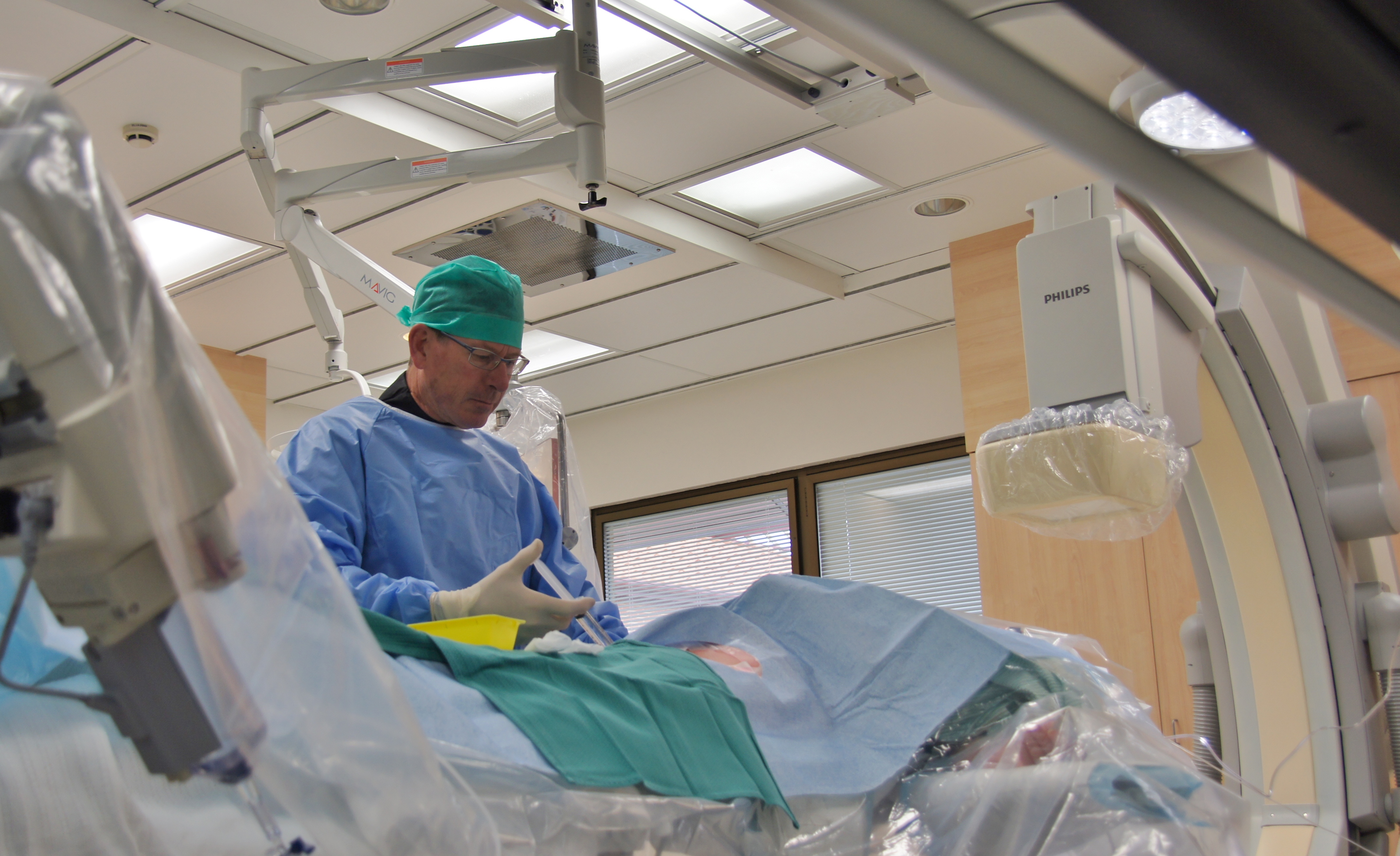Peripheral Vascular Disease – An Overview
Peripheral Vascular Disease refers to narrowing or occlusion of the arteries. The term covers any artery other than in the heart or brain.
It is most commonly due to atherosclerosis and involves the arteries providing blood supply to the legs.
Atherosclerosis causes plaque build up within the artery, restricting flow past the narrowing.
Patients with peripheral vascular disease may complain of:
- Intermittent Claudication: Pain, cramp or fatigue in the muscles of the leg, which develops when walking. The calves are most often affected, but symptoms can extend from the buttocks, or thighs down to the calves. The symptoms usually improve with rest and recur with further walking.They are worse going up stairs or an incline.
- Cold feet: As the only symptom this is more common in older patients who do not walk long distances.
- Rest Pain: Pain in the foot or lower leg that is persistent (and present at rest, rather than being caused by walking). It is usually worse at night, and may be improved by hanging the leg down.
- Ulcers: Sores on the leg or foot that are unduly slow to heal.
- Gangrene: Blackened areas of skin on the toes or foot. These are often painful.
When atherosclerosis occurs in arteries of the heart, it is called coronary artery disease. Atherosclerosis in arteries of the brain is called cerebrovascular disease.
The Causes of Peripheral Vascular Disease
Atherosclerosis is by far the most common cause of PVD. It has a number of Correctable Causes. These are the focus of long term Preventative Treatment, which is usually supervised by the local doctor.
Correctable Causes of Atherosclerosis
- Hypertension
- Hyperlipidaemia (cholesterol)
- Diabetes
- Smoking
- Obesity
Atherosclerosis has a number of other causes that cannot be treated.
Other Causes of Atherosclerosis
- Age
- Hereditary Factors: a family history of PVD
- Genetic Factors: the Scots have a high incidence of PVD and heart disease
Occasionally PVD is caused by something other than atherosclerosis –
- Arteritis: Inflammation of the arteries is caused by some Auto-immune Disorders.
- Thrombotic Blood Disorders – also called Thrombophila: These conditions cause blood clots that block vessels, e.g. Protein C deficiency, Factor V Leiden deficiency.
- Emboli (blood clots that form in the heart or a damaged artery) pass down to smaller vessels where they lodge causing blockage.
- Radiation damage to arteries.
- Infection causing damage to arteries.
- Congenital narrowing of arteries.
Diagnosis
- Clinical Assessment with a detailed History and Examination is the cornerstone of diagnosis. This assessment guides the Investigations and Treatment Recommendations.
- Duplex Ultrasound is the most common first line of Investigation. It provides images of the blood vessels and information about flow through the vessels. It is safe, and free of radiation.It is often done together with measurement of blood pressure at the ankles (ABI).
- CT Angiography provides more detailed information about the anatomy of blood vessels (shape, size, course taken). It is a CT scan with injection of contrast into the vessels, allowing them to be clearly seen. It is used for planning and monitoring of treatment. It involves radiation.
- Angiography provides the high quality information about the arteries that is often needed for treatment. It is done in Hospital under local anaesthetic. A catheter (fine tube) is introduced into the arteries and contrast is injected to provide images of the vessels and the disease within.
Angiography is often done in conjunction with treatment by angioplasty or stenting. - Blood tests may be done to check kidney function, blood sugar levels, cholesterol and other lipid levels and to exclude anaemia.
Treatment of Peripheral Vascular Disease
The goals of treatment are to reduce symptoms, improve quality of life, and preserve the limb.
Treatment of PVD involves lifestyle changes, medications and surgery.
Lifestyle Changes that may be needed include
- Stopping smoking
- Exercising regularly
- Eating a well balanced diet with lower fat and salt
Medications may be needed to treat
- Diabetes
- High blood pressure
- Cholesterol
Future heart attacks and stroke can be reduced by antiplatelet drugs (e.g. Asprin) and when appropriate, anticoagulants.
Minimally Invasive Surgery: Stents and Angioplasty
Minimally invasive surgery is the preferred treatment of peripheral vascular disease in this Practice. It is a constantly improving area of practice.
Catheters and other equipment are introduced through pinhole entry of the arteries, usually in the groin.
The aim is to increase blood flow through the treated artery, which has been narrowed or blocked by peripheral vascular disease.
The procedures are done under local anesthetic, sometimes with additional sedation, and patients go home on the day of treatment or the day after in most cases.



 Menu
Menu





